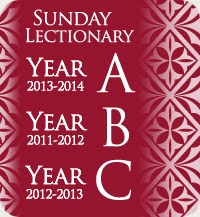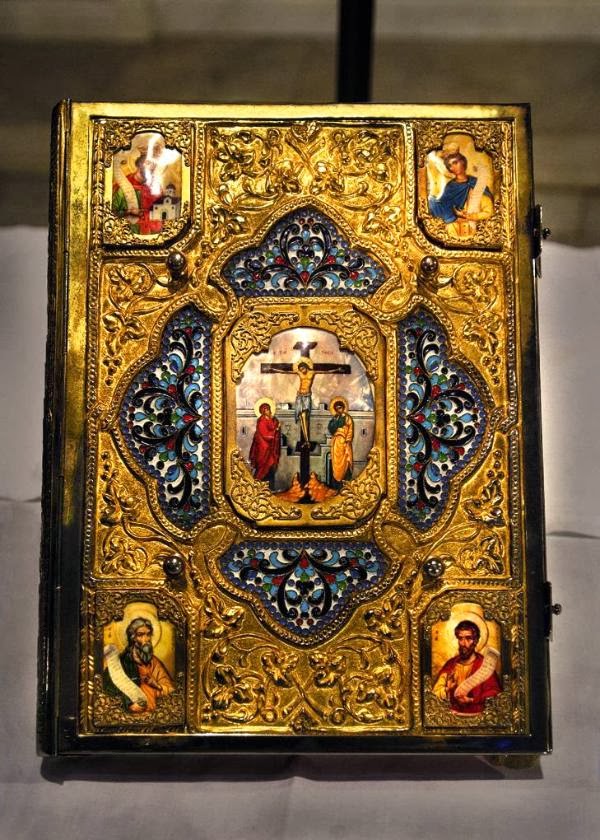Is the multi-year Lectionary of the Novus Ordo, containing vastly greater quantities of Scripture, superior to the old one-year Lectionary of the usus antiquior? For a very long time, this question was hardly taken seriously, its answer being assumed to be a self-evident yes. It is therefore gratifying to see more and more people awakening to the seriousness of the question and undertaking comparisons and studies, rather than assuming, in a distinctively modern fashion, that bigger is better.
Decades' worth of experience with both lectionaries has led me, in fact, to just the opposite conclusion: the new Lectionary is unwieldy and hard to come to terms with, whereas the old cycle of readings is beautifully proportioned to its liturgical purpose and to the natural rhythm of the year. The regular and comforting recurrence of the readings helps the worshiper absorb their teaching ever more deeply.
One who immerses himself in the traditional liturgy becomes aware that its annual readings, over time, are becoming bone of one’s bone, flesh of one’s flesh. One begins to think of certain months and seasons of the year, certain Sundays or categories of saints in tandem with their fixed readings, which open up their meaning more and more to the devout soul. If the Word of God has an infinite depth to it, the traditional liturgy bids us stand beside the same well year by year, dropping down our bucket into it, and in that way awakening to an inexhaustible depth that may not be so clear to someone who is dipping his bucket into different places of a stream over the course of two or three years.
Decades' worth of experience with both lectionaries has led me, in fact, to just the opposite conclusion: the new Lectionary is unwieldy and hard to come to terms with, whereas the old cycle of readings is beautifully proportioned to its liturgical purpose and to the natural rhythm of the year. The regular and comforting recurrence of the readings helps the worshiper absorb their teaching ever more deeply.
One who immerses himself in the traditional liturgy becomes aware that its annual readings, over time, are becoming bone of one’s bone, flesh of one’s flesh. One begins to think of certain months and seasons of the year, certain Sundays or categories of saints in tandem with their fixed readings, which open up their meaning more and more to the devout soul. If the Word of God has an infinite depth to it, the traditional liturgy bids us stand beside the same well year by year, dropping down our bucket into it, and in that way awakening to an inexhaustible depth that may not be so clear to someone who is dipping his bucket into different places of a stream over the course of two or three years.
| A deacon chants the Gospel at the usus antiquior |
The goal of Christian faith is not a material knowledge of Scripture, but personal sanctification and conversion, which is the formal content and aim of Scripture itself. In a particular way, the saints are put forward as our example of how to live, how to believe, how to love, and Scripture is rightly pressed into service for this purpose.
The goal of liturgy is not to make us familiar with Scripture in the manner of a Bible study—which, of course, ought to be taking place outside of Mass—but to give us the right formation of mind with regard to the realities of our faith. The fundamental elements of faith need to be inculcated week after week, day after day; and thus it is pedagogically most appropriate to have certain readings repeated annually, e.g., the Epistle and Gospel for the various Sundays after Pentecost, the readings for Easter Week, the readings for certain categories of saints. In this way, the Christian people are formed by the proclamation of fundamental texts throughout the cycle of the year, rather than being carried off each day into new regions of text, especially some of the drier historical narratives or longer passages of the Prophets, from which it may be hard to profit except by extra-liturgical study.
 |
| Usus antiquior Gospel procession: how we treat the Word is a lesson unto itself |
Thus, every time we celebrate the feast of a saintly Pope in the traditional Roman Rite, we read the famous verses from Matthew 16, which show the fundamental vocation of the Pope, the ideal to which he ought to correspond, as well as beckoning us to re-commit ourselves to the papacy as the rock instituted by Christ so that His Church would never founder when buffeted by the attacks of Satan.
Another example (to me, one of the most moving of all): on May 4, the feast of St. Monica in the usus antiquior, the Epistle of the Mass is St. Paul speaking of the honor due to true widows (this reading Monica shares with other holy widows), but the specially chosen Gospel recounts when Jesus raised the weeping widow’s son from the dead and restored him to his mother. What more perfect Gospel could there be for the mother of St. Augustine! What could better impress both the Gospel and Monica’s life on our minds than this striking juxtaposition! Each year, throughout her sojourn on earth, no matter how many thousands of years pass by, the Church commemorates the mother who never lost faith in God and eventually regained her son, dead in sin and error, risen in the life of grace.
In this way, the entire liturgy is knit together as a seamless garment: the prayers honor and invoke the saint; the readings extol the virtues of the saint, who is put forward as our example and teacher; the Eucharistic sacrifice manifestly links the Church Triumphant, represented by the lists of saints in the Roman Canon, to all of us pilgrims in the Church Militant. The whole liturgy acquires a unity of sanctification, showing us both the primordial Way of sanctity—Jesus in the Holy Eucharist—and the models of sanctity achieved, the saints.
In the new liturgy, by contrast, the prayers, readings, and Eucharist are awkwardly situated vis-à-vis one another: they no longer fit together into a single narrative. The somewhat mechanical use of Scripture is extrinsic and accidental to the celebration of most saints’ days, in tension with Scripture’s real purpose, which is not mere knowledge but a living application to our lives, mediated through the lives of those who have lived what Scripture teaches and thereby instantiate it. The saints are, we could say, Scripture in flesh and blood, and that is why the written word is so appropriately called upon to minister to them and reflect their existential primacy. When celebrating the feasts of Virgins, the traditional liturgy chooses those readings that emphasize the beauty and eminence of the vocation to virginity; and so with the other feasts.
The Scriptures, by themselves, are a dead letter. It is the saints who are the ultimate proof and most glorious manifestation of the truth of the Christian faith. The saints demonstrate that Scripture is not a dead letter but a living paradigm. We must understand the role of Scripture at Mass in reference to its embodiment in the lives of the saints.
A wider selection of readings could have been (and can still be) incorporated into the old missal, without destroying the correlations I am defending. There could be a more ample distribution of pertinent readings for martyrs, virgins, popes, confessors, doctors, etc. Even with such a distribution, however, the profound unity of the liturgy will be perfectly maintained whenever the fitting harmony of prayers, antiphons, readings, and Ordinary is respected throughout. Specific propers and readings could be appointed for certain saints, emphasizing the contemplative vocation of one or the missionary vocation of another; but again, all with a view towards the integrity of the liturgy as a coming together of the communion of saints to celebrate victory already accomplished and victory yet to be achieved.
There is nothing wrong with a wider selection from Scripture per se, provided it carefully observes the liturgical laws summarized above. The problem is rather with a free-floating (i.e., largely sanctoral-independent) rationalistic sequence of Scripture readings that accomplishes little in the way of deep instruction and illumination of the mystery of the Saints, God’s “chosen ones,” to whom we are to conform ourselves as we strive to be conformed by grace to the ultimate Holy One of God, Jesus Christ.


